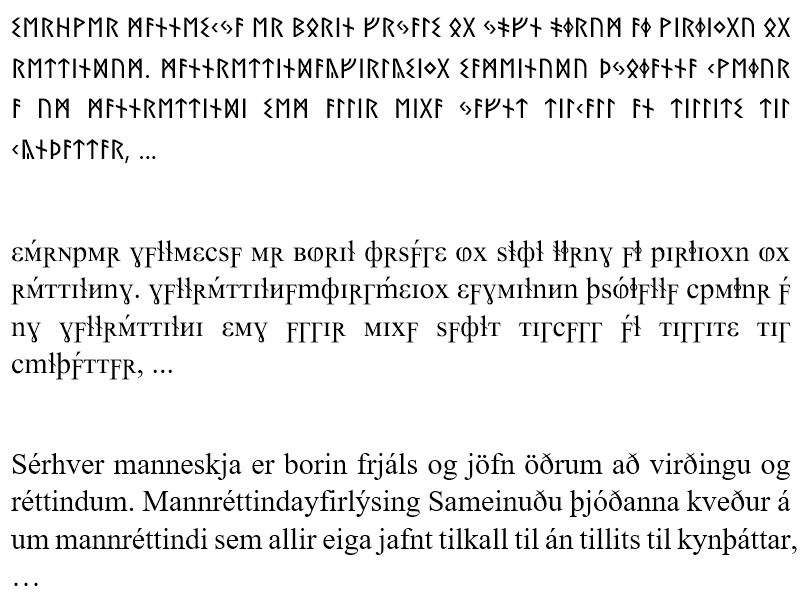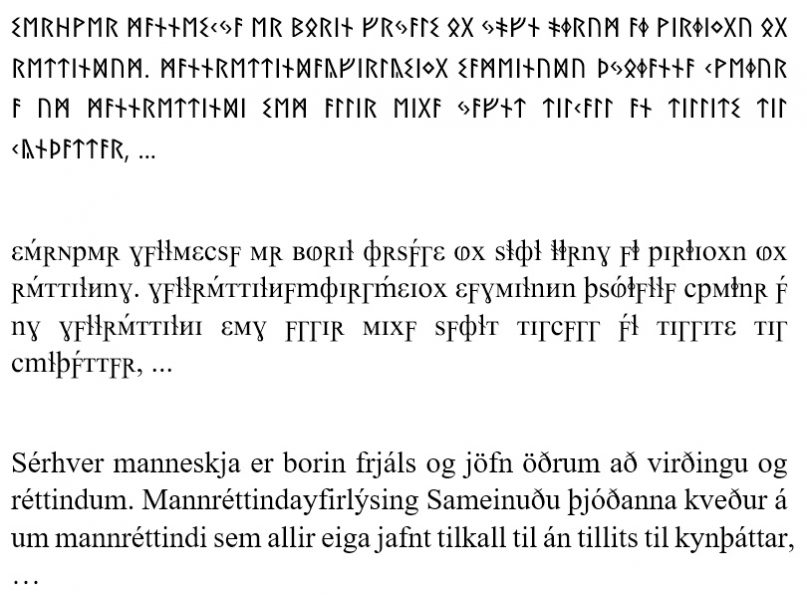A little historical fun.
I think that most of you already know what fufarq (futhark) is. If not, then briefly: the runic writing of the ancient Germans, and in particular, their northern tribes (Lavinavia and environs). The first inscriptions were recorded in the third century BC, then it evolved and changed until it completely died out in the 12th-13th century, giving way to romanica. Sad, but natural.
However, with the advent of printing in Sneland (16th century AD), a movement to restore the futhark suddenly arose. It took off very quickly; to convey the letters of the Sneland alphabet, the entire classic senior fufark was used with some nuances:
- ᛇ was used for æ;
- ᚣ (Old English rune) - for y;
- ᚬ (late version of the rune ᚨ) - for o;
- ᛄ (rune variant ᛃ) - for ð;
It is also important that the runes were adapted to look more like something… novelistic, let's say. And over the next century, many books were printed, and then the initiative faded away and everything returned to normal.
But the inscriptions remained, and I will show you one of their options now. This is the Universal Declaration of the Rights of the Individual, its very beginning in Snelandic.
ᛊᛖᚱᚺᚹᛖᚱ ᛗᚨᚾᚾᛖᛊᚲᛃᚨ ᛖᚱ ᛒᛟᚱᛁᚾ ᚠᚱᛃᚨᛚᛊ ᛟᚷ ᛃᚬᚠᚾ ᚬᛄᚱ ᚢᛗ ᚨᛄ ᚹᛁᚱᛄᛁᛜᚷᚢ ᛟᚷ ᚱᛖᛏᛏᛁᚾᛞᚢᛗ. . ᚲᚹᛖᛄᚢᚱ ᚨ ᚢᛗ ᛗᚨᚾᚾᚱᛖᛏᛏᛁᚾᛞᛁ ᛊᛖᛗ ᚨᛚᛚᛁᚱ ᛖᛁᚷᚨ ᛃᚨᚠᚾᛏ …
Sérhver manneskja er borin frjáls og jöfn öðrum að virðingu og réttindum. Mannréttindayfirlýsing Sameinuðu þjóðanna kveður á um mannréttindi sem allir eiga jafnt tilkall til án tillits til kynþáttar, …


